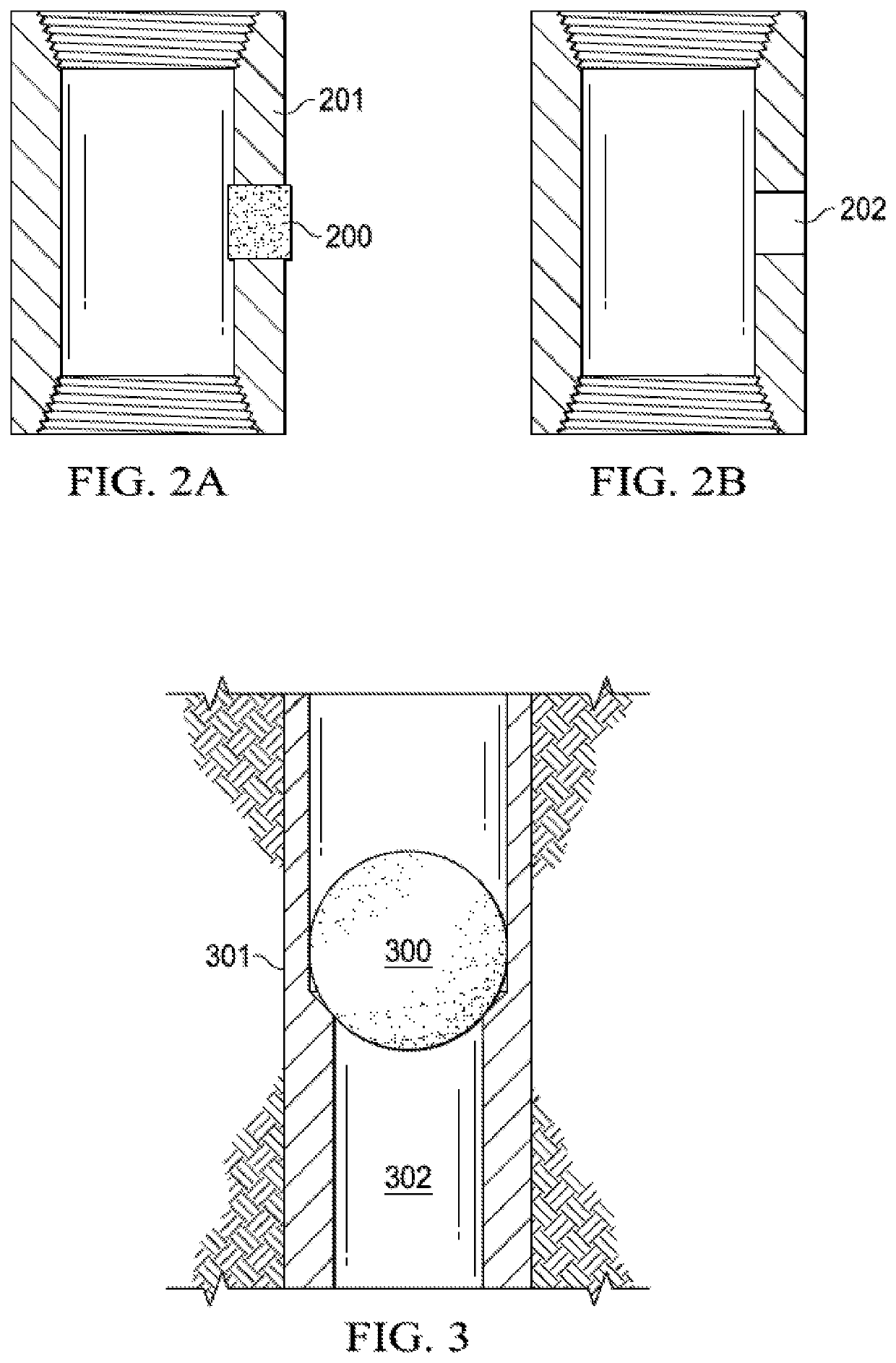Low temperature diversion in well completion operations using natural mineral compound
a technology of natural mineral compound and well completion, which is applied in the field of degradable additives in treatment fluids, can solve the problems of reducing affecting the efficiency of treatment operation, and difficult to block at low reservoir temperature between 75° f. and 140° f., and achieves the effect of increasing the degradation rate and high loading
- Summary
- Abstract
- Description
- Claims
- Application Information
AI Technical Summary
Benefits of technology
Problems solved by technology
Method used
Image
Examples
example 1
[0151]The degradation of langbeinite in a pH neutral solution was measured as a function of time. For this example, a series of langbeinite / water solutions were heated at set temperatures, with the un-degraded langbeinite being weighed after various periods of time to determine the degradation rate.
[0152]Each solution had 1 gram of particulate langbeinite placed in 8 oz jars with 100 mL of water. The langbeinite had a particle size of 12 / 14 mesh on the U.S. Sieve Series Scale. The jars were sealed and placed in a temperature controlled oven. The oven was operated at 72° F. (˜22° C.), 100° F. (˜38° C.), 120° F. (˜49° C.), 130° F. (˜54° C.), and 140° F. (˜60° C.). At predetermined times, a sealed jar was removed from the oven, wherein the particulate langbeinite solids remaining in the jar were filtered, dried and weighed to determine the weight change over time. The results are shown in FIG. 4.
[0153]The degradation rate of the langbeinite was temperature dependent, with the highest o...
example 2
[0156]The degradation of langbeinite in an acidic solution was measured as a function of time and compared to a pH neutral solution of water and langbeinite. For this example, a series of solutions of particulate langbeinite with water or 15% HCl were heated at set temperatures, with the langbeinite being weighed after various periods of time to determine the degradation rate.
[0157]For each acidic solution, 1 gram of langbeinite was placed in an 8 oz jar, with a 15% HCl solution (85 mL of a water and 15 mL of HCl). As before, the neutral pH solution had 1 gram of particulate langbeinite placed in an 8 oz jar with 100 mL of water. The langbeinite had a particle size of 12 / 14 mesh on the U.S. Sieve Series. The jars were sealed and placed in a temperature-controlled oven operating at a temperature of 100° F. (˜38° C.). At various periods of time, a sealed jar was removed from the oven, wherein the solids remaining in the jar were filtered, dried and weighed to determine the weight chan...
example 3
[0160]The degradation of langbeinite in solutions with different salinities were measured as a function of time and compared to pH neutral control solutions of fresh water and langbeinite. For this example, a series of solutions of particulate langbeinite in fresh water with no added NaCl, a 5% NaCl salt water (5 g of NaCl in about 100 mL of water), a 10% NaCl salt water (10 g of NaCl in about 100 mL of water), and seawater were heated at set temperatures, with the langbeinite being weighed after various periods of time to determine the degradation rate.
[0161]For each salt water solution and seawater, 1 gram of langbeinite was placed in an 8 oz jar with 100 mL of the salt water or seawater. As before, the neutral pH control solutions had 1 gram of particulate langbeinite placed in an 8 oz jar with 100 mL of water. The langbeinite had a particle size of 12 / 14 mesh on the U.S. Sieve Series Scale. The jars were sealed and placed in a temperature-controlled oven. The oven was operated a...
PUM
| Property | Measurement | Unit |
|---|---|---|
| hole temperature | aaaaa | aaaaa |
| particle size | aaaaa | aaaaa |
| reservoir temperatures | aaaaa | aaaaa |
Abstract
Description
Claims
Application Information
 Login to View More
Login to View More - R&D
- Intellectual Property
- Life Sciences
- Materials
- Tech Scout
- Unparalleled Data Quality
- Higher Quality Content
- 60% Fewer Hallucinations
Browse by: Latest US Patents, China's latest patents, Technical Efficacy Thesaurus, Application Domain, Technology Topic, Popular Technical Reports.
© 2025 PatSnap. All rights reserved.Legal|Privacy policy|Modern Slavery Act Transparency Statement|Sitemap|About US| Contact US: help@patsnap.com



